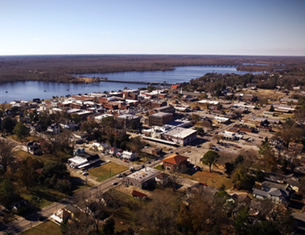Publisher's note: The author of this post is Mitch Kokai, who is senior political analyst for the Carolina Journal, John Hood Publisher.
A recent national report dinged North Carolina for its lower-than-average "per-pupil expenditure." At least one state lawmaker is likely to grumble openly about that result.
Per-pupil expenditure is one of the most common data points used to compare public education systems within states, across the nation, and even around the world.
The 2018 "Quality Counts" report from Education Week used PPE to help determine a D grade for North Carolina in the category of "school funding." That D helped bring down the Tar Heel State's overall grade to C-minus, below the national grade of C. North Carolina ranked No. 40 among all states.
"School finance is really the area where North Carolina struggles," Sterling Lloyd of the Education Week Research Center
told the Raleigh News & Observer.
"It's 45th in the nation for its school finance grade."
Lloyd told the
N&O that "what especially hurt" North Carolina in calculating that No. 45 ranking was its PPE numbers, as compiled from 2015 federal data. North Carolina spent an average of $9,217 per student, compared to a national average of $12,526. The "Quality Counts" report showed 2.5 percent of this state's 115 school districts exceeded that national average.
One suspects that the numbers might cause heartburn for lawmakers such as Rep. Craig Horn, R-Union. Horn chairs the N.C. House's education budget and policy committees, as well as the Joint Legislative Task Force on Education Finance Reform.
During a November 2017 task force meeting, Horn detailed his concerns about PPE's usefulness. "Here in North Carolina we are, arguably, the fastest-growing state in the nation - certainly one of the fastest-growing states in the nation," Horn told colleagues.
"Therefore, we have a lot of kids coming in. We need a lot of teachers."
"Teachers don't generally start at the top or even in the middle of the pay scale," he continued.
"New teachers, of course, start at the bottom of the pay scale. If you have an increasing number of students and an increasing number of teachers at the lower end of the pay scale, per-pupil expenditure is going to be lower - which does not necessarily at all mean that the quality of their education [is lower] or that you're not meeting the needs of the student."
"As the teaching corps matures, the per-pupil expenditure - same number of students, same number of teachers - the PPE will go up," Horn said.
"I have a hard time, personally, using PPE as a benchmark of much of anything, quite frankly."
Average teacher pay plays a major role in determining the per-pupil expenditure number. It's not the only factor, Horn reminded his colleagues.
"Involved in PPE are the fixed costs of running your school," he said.
"Well, if a school is built to hold 1,000 students and holds 700, your PPE is X. Just do the math. If your student population happens to go up to 800 or 1,000, your fixed costs are the same. Your PPE has gone down. But nothing's really changed with regard to quality."
Horn aimed his comments at
Michael Griffith, school finance expert for the Education Commission of the States. Griffith assured the legislator that there's no magic number for per-pupil expenditure. He also admitted that PPE can vary substantially from state to state.
"Maybe I'm being a little thin-skinned," Horn responded.
"As a policymaker, I hear about PPE all the time. I get beat up over PPE. ... I'm generally resistant to what I think is an inordinate focus on PPE."
Horn is not alone in believing that PPE attracts too much attention in state education debates. It's an issue that also bothers Terry Stoops, the John Locke Foundation's vice president for research and director of education studies.
Stoops says the 2018 "Quality Counts" report omits the General Assembly's spending since 2015 to raise teacher pay. The report also takes no account of recent spending to boost programs that raise student achievement.
Beyond that specific concern, Stoops argues that debates about school funding "
miss the point."
"Education researchers have generally found that the relationship between spending and performance is weak," Stoops said.
"Most agree that how the money is spent is far more important than how much money is available to be spent."
It's better to focus on education productivity, or "bang for the buck," Stoops said. Variation among N.C. school systems demonstrates the limited value of PPE numbers.
"According to a 2014 study published by the liberal Center for American Progress, Union County, Davie County, Mooresville City, and Surry County school districts had the highest return on investment in the state," Stoops explained.
"In general, these districts had below-average per-pupil expenditures but above-average test scores. Schools in Hertford, Anson, Washington, and Halifax counties had the lowest return on investment. Per-pupil expenditures in these districts were relatively high, but their test scores were disappointingly low."
Stoops is not asking anyone to ignore PPE. But one suspects both he and Horn would agree that it's not the best data point to use when grading the quality of public education in North Carolina.























